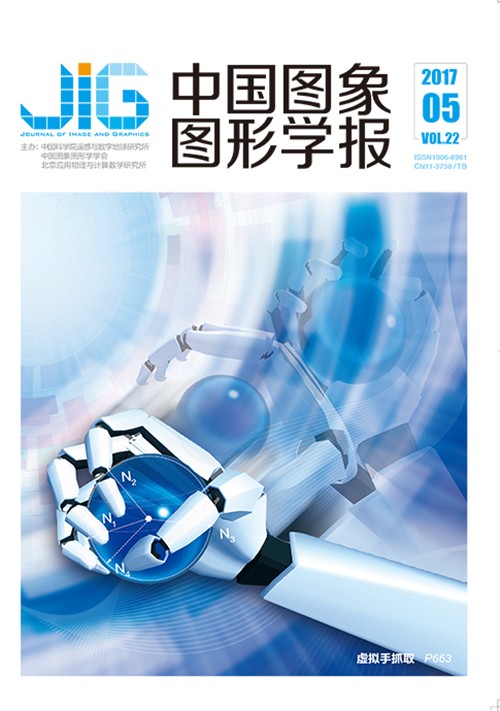
交互式遗传的3维场景扩展
摘 要
目的 实现良好的用户体验是3维游戏场景设计的重要目的之一。目前3维场景设计通常多由美术设计师进行创作而非建筑设计及景观规划领域人员,场景空间组织方式没有充分考虑到用户体验,同时由于大型3维场景的制作周期过长,设计效率普遍较低。上述现象直接导致游戏用户在3维游戏场景中交互的体验感较差,但是该问题一直以来没有较好的方法予以解决,也没有引起相关领域研究者的重视。本文提出一种基于交互式遗传的多手段协同操作方法,其目的为实现更加高效、合理的批量生成大型场景单元,并改善空间组织方式,以获得良好的游戏用户体验感。方法 本文方法主要通过特征聚类、蚁群算法空间布局优化及交互式遗传算法评价的方式来解决交互性差的问题。通过自学习方式进行场景建筑布局及立面层次进行特征聚类,并通过基于包围盒的蚁群优化算法进行场景组织的布局优化,最后结合交互式遗传算法引入用户评价来获得特征适应值评估从而得到新扩展的场景,该方法实现了重构场景的良好用户体验性及空间组织方式的合理性。结果 对小型场景进行扩展和对单体建筑的布局进行重构,该方法所得到的新的场景具有良好的空间组织结构,基于用户评价通过交互式遗传算法以用户喜好的评价驱动进化,扩展后的场景反映了真实用户的主观感受并取得较为令人满意的效果,提高了用户体验的友好性。结论 提出一种基于交互式遗传算法的场景重构方法,通过选择特定场景样本进行算法的实现,结果表明该方法具有可行性,并实现了较好的效果。本文方法对于游戏场景设计、文物古迹复原及系统仿真领域具有现实意义和研究价值。
关键词
Interactive genetic algorithm for extending 3D scenes
Zhang Yan, Fei Guangzheng(College of Computer Science, Communication University of China, Beijing 100024, China) Abstract
Objective The design of 3D scenes should obey the rules of the architecture's organization. At present, 3D scene designs are typically carried out by art an designer who lacks knowledge of architecture. A method is proposed in this paper to solve this problem. We extracted the flat and facade features of a scene and analyzed the features by interactive genetic algorithm (IGA). A new method is introduced to evaluate the weights and scores of these characteristics, as well as obtain the adaptive values to optimize the organization of the old structure. After evolution and learning our algorithm, we can expand and reconstruct the old scene to a new scene, which has better organizational form.The 3D reconstruction scene realize the personality style and provide a better experience to users. This method has significance in the field of 3D game design, historical remains recovery, and landscape design. Method Adaptive Resonance Theory neural network is introduced to extract the features of 3D scenes. The ant colony algorithm is then utilized to optimize the layout of the scene, and introduce the interactive genetic algorithm to obtain the best adaptive individuals to form a larger scene. The algorithm is combined with the intuition and psychological characteristics of the designer, which is realized by the algorithm. The principle of the method is based on the approximation model, which maps the 3D scene to human psychological space. The optimal solution is obtained by the adaptive values of evaluation. To avoid the problem of individual fatigue, we evaluate the information of samples to train the fitness function and obtain an approximate model for updating information in the process of evolution. The method uses a neural network to clutter the feature of 3D models and effectively decrease the work of manual evaluation. Result This study used a series of specific scenes and extracted features of the scene based on the user evaluation to expand the original scene. The neural network method is used to realize the reorganization and extraction of features. In addition, ant colony algorithm is utilized to reorganize and expand the 3D scene. After using interactive genetic algorithm, we realize the expansion and reconstruction of the old scene. Conclusion This research analyzed the optimization design of 3D scenes and proposed the idea on how to reconstruct and expand the complex 3D scenes. A hierarchical decomposition method is presented to optimize the complex scene and search each layer to maximize the value of the symmetry characteristics. Based on these symmetry features, we can realize the reconstruction, and by using the ant colony algorithm, we would obtain the optimized layout scheme. The IGA is introduced to obtain the optimal solutions to the scene. Through the optimization of IGA, we can obtain more accurate adaptive values. Optimal individuals can be generated and more optimized design scheme will be obtained. This method can quickly generate a large scene with the original feature and symmetry, as well as realize the expansion and reconstruction of the old scene. Moreover, it mixed features of the local 3-D structure without manual layout and design. The deficiency is that the user satisfaction of the reconstructed scene and the manual organization scene still require substantial experiments for verification. A disadvantage in this method is that it does not perform well enough to explore all kinds of implicit aesthetic indexes. For the analysis of the aesthetic characteristics and style of the 3-D scene, it is impossible to establish a realistic approximate model for quantitative analysis in the present stage. In-depth studies and further efforts should be devoted to solve the problems above. Experiments show that this method is practical and effective; it can effectively improve the efficiency of the design and enhance the ornamental value. This method has practical significance in 3D game design, virtual restoration, and visual simulation.
Keywords
|



 中国图象图形学报 │ 京ICP备05080539号-4 │ 本系统由
中国图象图形学报 │ 京ICP备05080539号-4 │ 本系统由